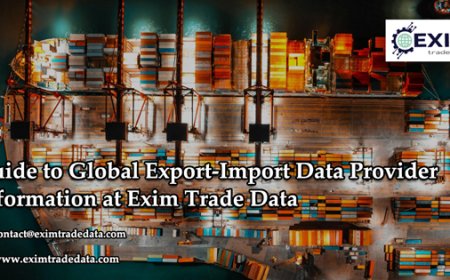Foil Containers in London: Convenience, Sustainability, and Growing Demand
In the fast-paced urban environment of London, food packaging plays a vital role in maintaining efficiency, hygiene, and convenience. Among the many types of packaging materials used across the city, foil containers have maintained a strong and consistent presence. Whether used by street food vendors, high-end catering services, or takeaway restaurants, these containers offer practical benefits that align with the citys diverse and dynamic food culture.
As Londoners become more environmentally conscious, the discussion around packaging has shifted from functionality alone to include sustainability and waste management. Foil containers, often overlooked in this dialogue, are emerging as a viable solution that balances both practicality and eco-friendlinessespecially when recycled properly.
What Are Foil Containers?
Foil containers are typically made from aluminium, a lightweight, heat-conductive, and recyclable metal. These containers are popular for packaging hot and cold food because they can withstand a wide range of temperatures, making them suitable for oven use, refrigeration, and even freezing.
They come in various shapes and sizesfrom single-portion containers used by takeaway joints to large trays used by catering companies. The versatility of foil containers makes them ideal for preparing, storing, and transporting food in a safe and hygienic manner.
The Role of Foil Containers in Londons Food Industry
Londons food scene is incredibly diverse, encompassing everything from traditional British dishes to cuisines from around the globe. Foil containers play a key role in ensuring this food reaches consumers safely, especially in the booming takeaway and delivery sectors.
Takeaway services such as Deliveroo, Uber Eats, and Just Eat have become integral parts of daily life in London. Foil containers are frequently used by these services to ensure meals retain their temperature and freshness during transit. Because aluminium has excellent thermal properties, it helps keep food hot or cold for longer periods.
Street food markets, such as those in Camden, Borough, and Brick Lane, also rely heavily on foil containers. Vendors appreciate their low cost, ease of use, and ability to hold saucy or greasy food without leaking. Many of these businesses have begun to combine foil containers with recyclable or compostable lids to reduce plastic waste.
Catering companies in London, serving everything from office lunches to large events, also favour foil trays for bulk meals. These containers simplify food preparation and transportation, and they are disposableminimising cleanup and labour costs.
Sustainability and Recycling
One of the main advantages of aluminium foil containers is that they are 100% recyclable. Unlike many plastic containers that degrade in quality when recycled, aluminium can be melted down and reused indefinitely without losing its properties. This makes it a highly sustainable packaging optionif its disposed of correctly.
In London, most boroughs accept aluminium foil and trays in their household recycling bins, provided the containers are clean and free from food residue. Unfortunately, contamination remains a barrier to effective recycling. Many foil containers end up in general waste due to leftover food, which means they are incinerated or sent to landfill instead of being recycled.
To address this issue, local councils and waste management companies are running public awareness campaigns on how to correctly recycle foil products. Encouraging Londoners to rinse containers before disposal is a simple but crucial step toward reducing waste.
Challenges and Concerns
Despite their benefits, foil containers are not without drawbacks. The production of aluminium is energy-intensive, although recycling uses only about 5% of the energy required to produce new aluminium. This highlights the importance of increasing recycling rates to make foil containers a more sustainable option.
Another concern is the overuse of single-use packaging in general. Even if recyclable, single-use items contribute to resource consumption and environmental pollution. As a result, there is a growing push in London to explore reusable packaging schemes, especially for frequent users like restaurants and caterers.
Innovations and Trends
To meet both regulatory and consumer demands, manufacturers are developing hybrid containerscombining foil with compostable or recyclable paper lids, or offering containers made from recycled aluminium. In London, some businesses have started using containers labeled Recyclable Aluminium to signal their sustainability efforts to customers.
Additionally, with the UK governments focus on Extended Producer Responsibility (EPR), companies are being encouraged (and eventually required) to take greater responsibility for the lifecycle of their packaging materials. This could result in wider adoption of recyclable materials like aluminium foil in the coming years.
Conclusion
Foil containers have proven to be a staple of Londons food packaging landscape due to their practicality, durability, and recyclability. As the city continues to grapple with the challenges of sustainability and waste management, aluminium foil containers offer a promising middle groundbalancing convenience with environmental responsibility.
For Londoners, the key lies in proper disposal and conscious consumption. With continued innovation, better recycling infrastructure, and public awareness, foil containers can remain a smart and sustainable solution for the citys thriving food industry.

























